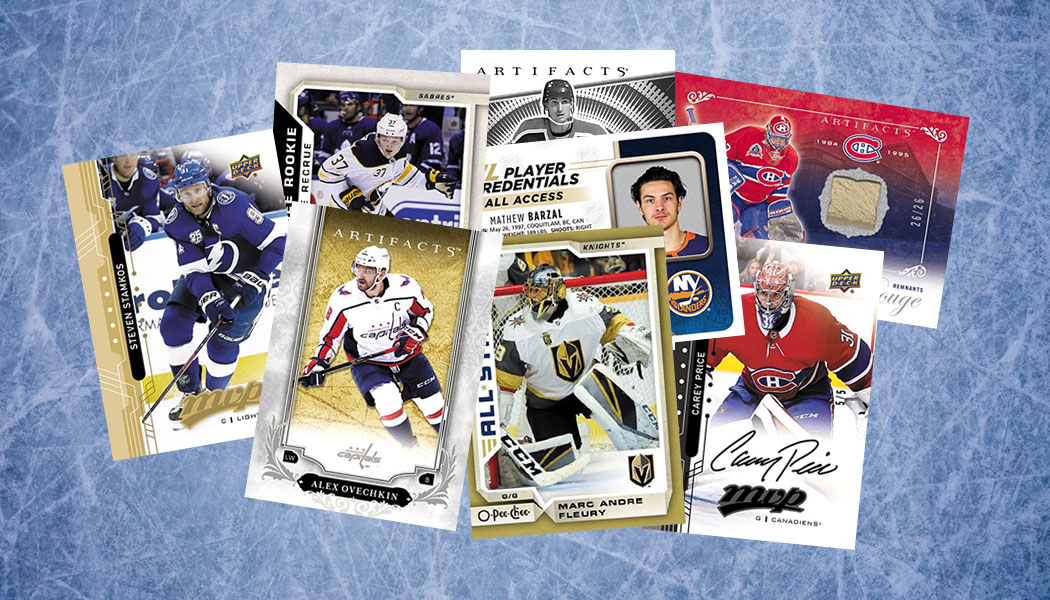Introduction
Card games have long been a popular way to pass the time, combining elements of skill, strategy, and luck. One such game that taps into the love of both card games and sports is the hockey card game. The hockey card game, while not as widely known as traditional card games like poker or solitaire, has its own unique charm, especially for sports enthusiasts. It blends the excitement of hockey with the strategic intricacies of a card game, making it a great pastime for fans of both genres. This guide will walk you through everything you need to know about how to play the hockey card game, from its rules to strategies that can help you win.

Overview Of The Hockey Card Game
The hockey card game is essentially a collectible card game based on the sport of hockey. Like other card games that are modeled after sports, the goal is to simulate a game of hockey using the cards in your hand. Players can collect cards that represent different players, teams, and scenarios within a hockey game. Cards may feature famous players, hockey moves, penalties, or power plays. This makes it an ideal game for those who are not only fans of card games but also have a deep passion for hockey.
The game typically requires a deck of cards designed specifically for the hockey card game. Players take turns playing cards in an attempt to outmaneuver their opponents and score goals, similar to the action seen in an actual hockey match. The rules can be adapted depending on the version of the game you are playing, but generally, the goal is to score more goals than your opponent by the end of the game.
Setting Up The Game
Before diving into the gameplay, you need to set up the game properly. The first thing you’ll need is a hockey-themed deck of cards. These decks are usually themed around specific teams or seasons, and they contain cards that represent players, actions, and scenarios within a hockey game. Each player will need their own deck, or you can use one shared deck, depending on the game’s version.
The hockey card game can be played between two players, or you can opt for a team-based format where multiple players form teams and work together to defeat the opposing team. The cards in the deck are shuffled before play begins, and each player is dealt a certain number of cards. The number of cards each player starts with can vary, but generally, players are dealt between five and seven cards at the start of the game.
After dealing the cards, each player will typically arrange their hand in a way that allows them to easily access their strategy. In some versions, players may be allowed to draw additional cards at the start of their turn, while in others, the number of cards in hand remains fixed. Players will take turns drawing and playing cards, and the game begins once both players are ready.
Types Of Cards In The Game
One of the main aspects that set the hockey card game apart from other card games is the wide variety of cards you can use during play. The types of cards in the deck usually fall into several categories, such as player cards, action cards, and event cards. Understanding the different types of cards and how they work is crucial for mastering the game.
Player cards represent specific hockey players. These cards typically include the player’s name, team, and stats, such as speed, accuracy, and strength. Some players are more skilled at offense, while others are better at defense or goaltending. When playing these cards, you’ll need to think strategically about which player will best help you score a goal or prevent your opponent from scoring.
Action cards represent various moves or actions within a hockey game, such as passing, shooting, or blocking. These cards are used to simulate the actual play on the ice, and they can be combined with player cards to make more powerful plays. For example, a player card combined with a “shoot” action card allows you to attempt a goal. These cards add a layer of strategy to the game, as you’ll need to decide when to use your action cards to get the best possible outcome.
Event cards introduce unpredictable elements to the game, such as penalties, injuries, or power plays. These cards can either help you or hinder your opponent, depending on how they are used. For instance, you might draw a penalty card that forces your opponent to lose a turn or a power play card that gives your team an extra opportunity to score. Event cards make the game more dynamic and exciting, as they can shift the momentum at any moment.
Objective Of The Game
The primary objective of the hockey card game is to score more goals than your opponent before the game ends. In most versions of the game, a player scores a goal by playing a combination of player and action cards that represent a successful scoring attempt. Once a goal is scored, it is recorded, and the game continues until the predetermined number of rounds is completed or a certain number of goals have been scored.
Some versions of the game may also include defensive elements, where players can use cards to block or deflect scoring attempts from their opponents. In these versions, the game becomes a balance of offense and defense, requiring players to think carefully about when to attack and when to hold back.

Basic Rules Of Play
While the rules of the hockey card game can vary depending on the version you are playing, there are some general guidelines that apply to most versions. Players take turns drawing and playing cards, with the goal of setting up plays that allow them to score goals or prevent their opponent from scoring. On each turn, a player can perform one or more of the following actions:
Each turn, players will need to decide how best to use their cards to either score a goal or prevent their opponent from scoring. Once a goal is scored, the player marks it down, and the game continues. The game typically ends after a set number of rounds or once a player reaches a predetermined number of goals.
In some versions of the game, players may also have the option to use strategy cards, which allow for more complex gameplay. These cards might let a player perform additional actions, swap cards with their opponent, or negate an opponent’s play. Strategy cards add another layer of depth to the game, making it more challenging and rewarding for players who enjoy planning and strategy.
Strategy And Tactics
Success in the hockey card game depends on a mix of luck, strategy, and timing. Since the game involves drawing cards from a shuffled deck, there is an element of chance involved in which cards you get. However, the key to winning lies in how you use the cards you are dealt.
A common strategy is to build up a strong offensive line by playing high-stat player cards early in the game. Once you have a solid offensive setup, you can focus on using your action cards to make coordinated attacks. For example, you might use a pass card to move the puck closer to your opponent’s goal and then follow it up with a shoot card to attempt a score.
Defensive tactics are equally important. If your opponent is building momentum, you’ll need to use your defensive cards wisely to prevent them from scoring. Holding on to key defensive cards, such as block or intercept cards, until the right moment can make the difference between a win and a loss. Timing is crucial, as using your defensive cards too early or too late can leave you vulnerable.
Event cards also play a significant role in strategy. These cards can change the course of the game by introducing unexpected penalties or advantages. Knowing when to use your event cards and how to respond to your opponent’s event cards is a key part of mastering the game.
The Role Of Luck
Like many card games, the hockey card game involves a significant amount of luck. Since the cards are shuffled and dealt randomly, you never know which cards you’ll get in your hand. This element of luck keeps the game exciting, as even the most well-planned strategy can be undone by a bad draw or an opponent’s unexpected play.
However, while luck plays a role, it is not the only factor that determines success. Skilled players know how to make the most of the cards they are dealt, and they use their strategic abilities to overcome unlucky draws. By practicing the game and learning how to anticipate your opponent’s moves, you can improve your chances of winning, even when luck is not on your side.
Advanced Versions And Variations
The basic version of the hockey card game is straightforward, but there are several advanced versions and variations that add new rules, cards, and challenges. For instance, some versions include more complex scoring systems, where different types of goals (such as slap shots or rebounds) are worth varying amounts of points. Others introduce more advanced strategy cards, allowing for longer, more tactical games.
Another popular variation is the tournament mode, where multiple players or teams compete in a series of matches. The winner of each match advances to the next round, with the ultimate goal of becoming the tournament champion. Tournament mode adds an extra level of competition and excitement to the game, as players must not only win individual matches but also plan for long-term success over the course of multiple games.
In addition to tournament mode, some variations of the hockey card game include a draft system, where players build their deck by selecting cards from a shared pool. This draft system adds a strategic element to the deck-building process, as players must think carefully about which cards to choose in order to build a well-rounded and competitive deck.
The Social Aspect Of The Game
One of the best things about the hockey card game is its social aspect. Like other card games, it can be a great way to bring people together for a fun and engaging activity. Whether you’re playing one-on-one with a friend or participating in a team-based game with multiple players, the hockey card game encourages interaction and camaraderie.
For hockey fans, the game is a way to bond over their shared love of the sport. Many players enjoy collecting and trading cards, and some versions of the game even allow players to customize their decks with rare or special cards. This adds a collectible element to the game, similar to other collectible card games like Magic: The Gathering or Yu-Gi-Oh!
Tips For New Players
If you’re new to the hockey card game, the best way to get started is to familiarize yourself with the different types of cards and how they work together. Take the time to study the rules and practice playing with friends or family members. As you gain experience, you’ll start to develop your own strategies and tactics that work best for you.
One tip for new players is to focus on building a balanced deck. While it may be tempting to fill your deck with powerful offensive players, having a mix of offensive, defensive, and event cards will give you more flexibility during the game. Another tip is to pay attention to your opponent’s moves and try to anticipate their strategy. By keeping an eye on what cards they play and when, you can better plan your own plays and counter their attacks.

Conclusion
The hockey card game is a fun and engaging way to combine the thrill of hockey with the strategic elements of a card game. Whether you’re a seasoned card player or a hockey fan looking for a new way to enjoy the sport, the hockey card game offers hours of entertainment. With a mix of skill, strategy, and luck, every game is different, making it an exciting challenge for players of all levels. By learning the rules, practicing your strategy, and embracing the social aspect of the game, you’ll be well on your way to becoming a hockey card game champion.











